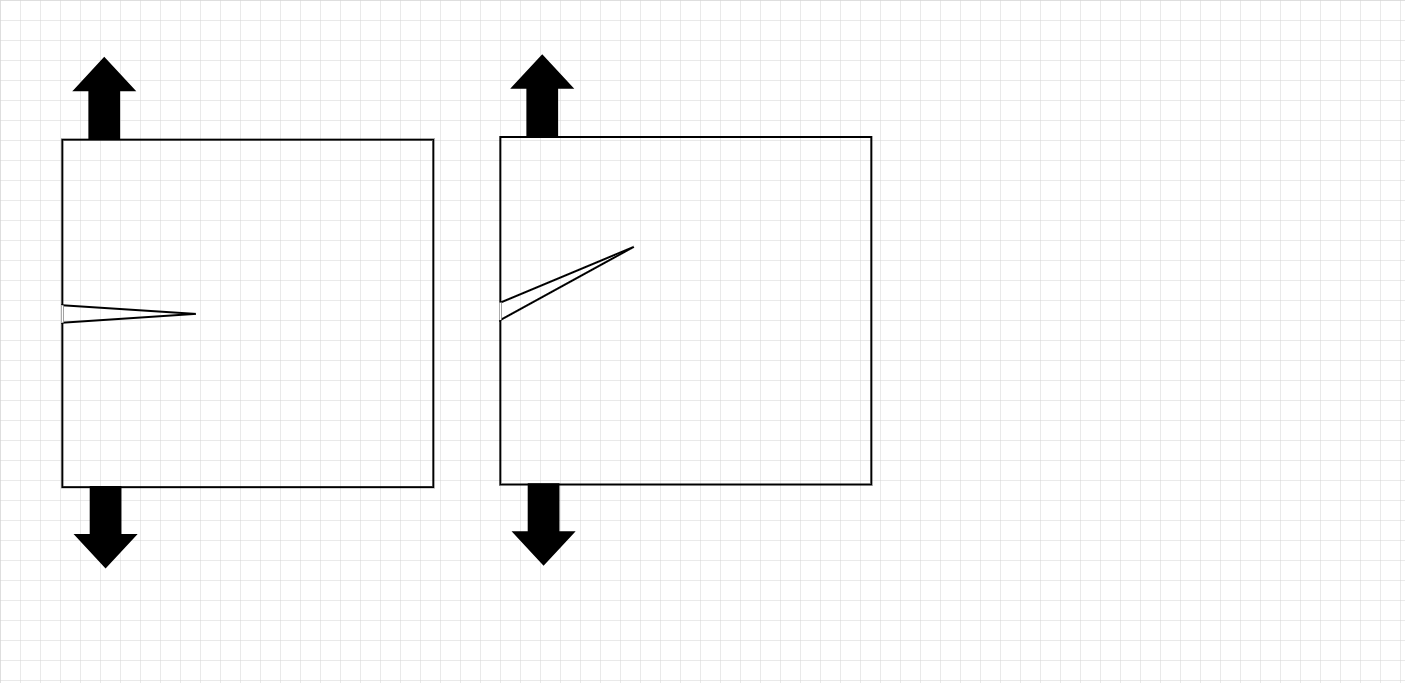HomeWork 2#
Question #1#
Try to plot the stress field and plastic strain field in front of an edge crack at an angle \(\theta\) for a plate made of a non-linear material subjected to remote tensile load (assume plane strain conditions).#

Guidance :#
Implementing the constitutive relation#
Option 1:
Use the same implementation you used for HW1, only this time replace the function sigma(v) following :
and choose \(0 \lt n \le 1\)
Option 2
Use the implementation from Numerical tours of continuum mechanics using FEniCS
Points for discussion#
Discuss the effect of choosing different values of \(\theta\) on the resulting fields (free discussion)
Estimate the size of the plastic zone for each value of \(\theta\) and for the chosen hardening.
For \(\theta=0\) does \(r_p\) agree with the equation derived during the lecture?
Question #2#
Repeat the above only this time for a linear-elastic material for \(\theta=[0,\pi/6,\pi/4,/\pi/3]\).#
Points for discussion:#
What is the angle for which the maximum hoop stress is attained?
What is the angle for which the maximum strain energy density is attained?
When and why will you expect the two criteria to be the same?
When and why will you expect the two criteria to be different?
Question #3#
Run a 3D FE analysis of an edge cracked plate (or CT-specimen) with thickness B (such that the other dimensions are in agreement with ASTM-E399) considering a non-linear material.#
Plot \(\sigma_{xx}\);\(\sigma_{yy}\);\(\sigma_{zz}\) as a function of the thickness along the crack line
Plot the stress triaxiallity as a function of the thickness along the crack line
Plot the plastic strain contour at three locations along the thickness.
Discuss your results with respect to what we saw in class.#
Question #4#
Consider a plate with an edge cracked plate made of a linear elastic material and under plane strain conditions subjected to remote tensile load.#
Calculate the strain energy in the plate for the selected level of load.
Repeat the calculation only this time for a crack which is \(2\%\) longer than the one used before.
Discuss what can be learned from this excersice.
